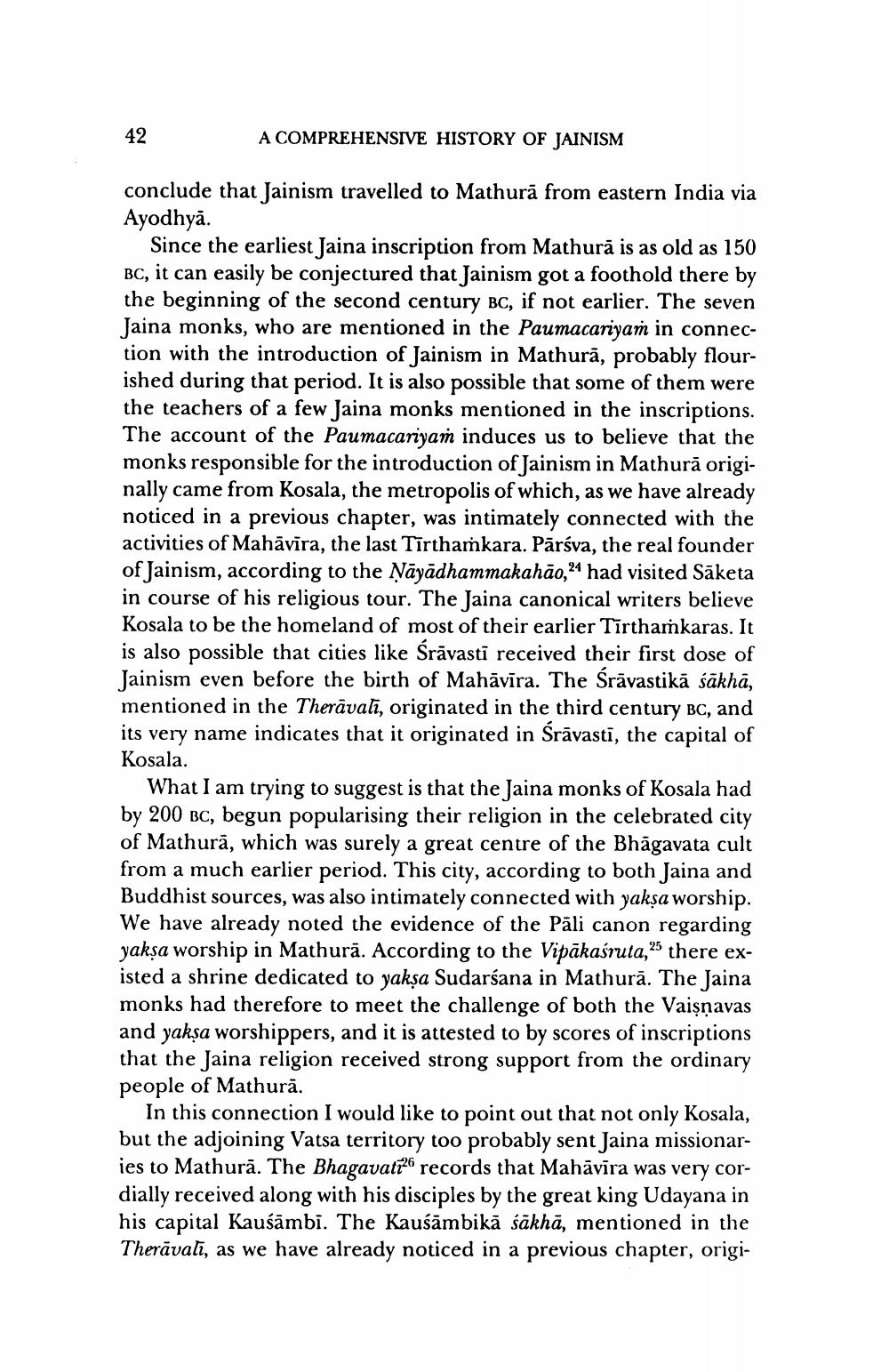________________
42
A COMPREHENSIVE HISTORY OF JAINISM
conclude that Jainism travelled to Mathurā from eastern India via Ayodhyā.
Since the earliest Jaina inscription from Mathurā is as old as 150 BC, it can easily be conjectured that Jainism got a foothold there by the beginning of the second century BC, if not earlier. The seven Jaina monks, who are mentioned in the Paumacariyam in connection with the introduction of Jainism in Mathură, probably flourished during that period. It is also possible that some of them were the teachers of a few Jaina monks mentioned in the inscriptions. The account of the Paumacariyam induces us to believe that the monks responsible for the introduction of Jainism in Mathurā originally came from Kosala, the metropolis of which, as we have already noticed in a previous chapter, was intimately connected with the activities of Mahāvira, the last Tirthamkara. Pārsva, the real founder of Jainism, according to the Ņāyādhammakahā0,24 had visited Sāketa in course of his religious tour. The Jaina canonical writers believe Kosala to be the homeland of most of their earlier Tirthamkaras. It is also possible that cities like Srāvasti received their first dose of Jainism even before the birth of Mahāvīra. The Srāvastikā sākhā, mentioned in the Therävali, originated in the third century BC, and its very name indicates that it originated in Srāvasti, the capital of Kosala.
What I am trying to suggest is that the Jaina monks of Kosala had by 200 BC, begun popularising their religion in the celebrated city of Mathurā, which was surely a great centre of the Bhagavata cult from a much earlier period. This city, according to both Jaina and Buddhist sources, was also intimately connected with yakșa worship. We have already noted the evidence of the Pāli canon regarding yakșa worship in Mathurā. According to the Vipākaśruta,25 there existed a shrine dedicated to yaksa Sudarsana in Mathurā. The Jaina monks had therefore to meet the challenge of both the Vaisnavas and yakșa worshippers, and it is attested to by scores of inscriptions that the Jaina religion received strong support from the ordinary people of Mathurā.
In this connection I would like to point out that not only Kosala, but the adjoining Vatsa territory too probably sent Jaina missionaries to Mathurā. The Bhagavatz26 records that Mahāvīra was very cordially received along with his disciples by the great king Udayana in his capital Kaušāmbi. The Kausambikā sākhā, mentioned in the Therāvali, as we have already noticed in a previous chapter, origi




